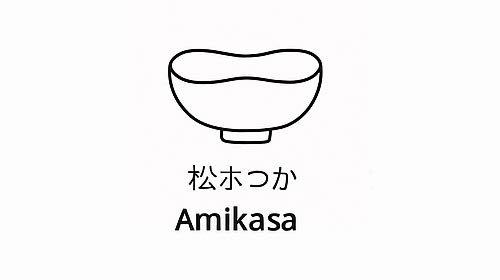The Zōkō-gata chawan is one of the most dignified appearances among matcha bowls. The name "Zōkō" (蔵高) can be interpreted as "towering storage" or "sublime volume," with "zō" also suggesting collection or storage, and "kō" suggesting elevation or grandeur.
It is a form that exudes balance and authority —often with a broad base, clear lines, and a kind of "alert stance." Zōkō-gata bowls are considered suitable for special guests , for handover rituals, or for formal, structured ceremonies.
Shape & Characteristics
The Zōkō-gata is usually somewhat taller , with a slightly conical shape and a pronounced foot ring . Its walls rise sharply upwards before gently curving outward at the edge. The ratio of width to height is balanced—not as flat as the Hira-gata, not as deep as the Tsutsu-gata.
Its most distinctive feature is its striking silhouette : This bowl "stands" upright – firm, alert, and serene. It sits firmly in the hand, with a slight downward center of gravity. The wide base provides stability, symbolically as well.
Origin & historical background
The zōkō-gata developed in the early Edo period , particularly in the Kan'ei period (17th century), when formal ceremony was further developed in many tea schools. Bowls of this type were used in important gatherings or for special gifts—such as gift-giving rituals (te-okuri), in which the host bestowed a special honor on the guest.
The clear vertical line of the bowl is intended to underline the respectful dialogue between people, the vessel and its contents .
Materials & Glaze
Zōkō-gata bowls were traditionally made in Seto and Karatsu , and later also in Mino and Kyoto. They are often finely crafted, with a smooth, almost elegant surface:
-
Light brown to ochre glazes with subtle grain
-
Kohiki or Oribe variants , often with subtle decorations
-
Strong, clearly cut Kōdai with striking contours
Some bowls of this type were additionally decorated with inscriptions or symbols, for example on the base or inside the wall.
Application & Meaning
The Zōkō-gata is preferred:
-
at formal Usucha ceremonies with several guests
-
when a symbolic act of appreciation is the focus
-
at tea schools with a strong structural tradition , such as Omotesenke
Its volume and wide opening allow for airy tea breaking, while its shape gives meaning to the moment – elevating the tea and placing it at the center.
Aesthetic effect
In Japanese tea culture, this bowl represents respect, clarity, and presented stillness . It is not withdrawn like the Dojimari-gata, nor fleeting like the Hira-gata—but intentionally present. It demands poise—from both host and guest.
Its effect lies in the calmness of its lines and its clear definition: an invitation to understand tea as a gesture, not just as a drink.




Leave a comment
This site is protected by hCaptcha and the hCaptcha Privacy Policy and Terms of Service apply.